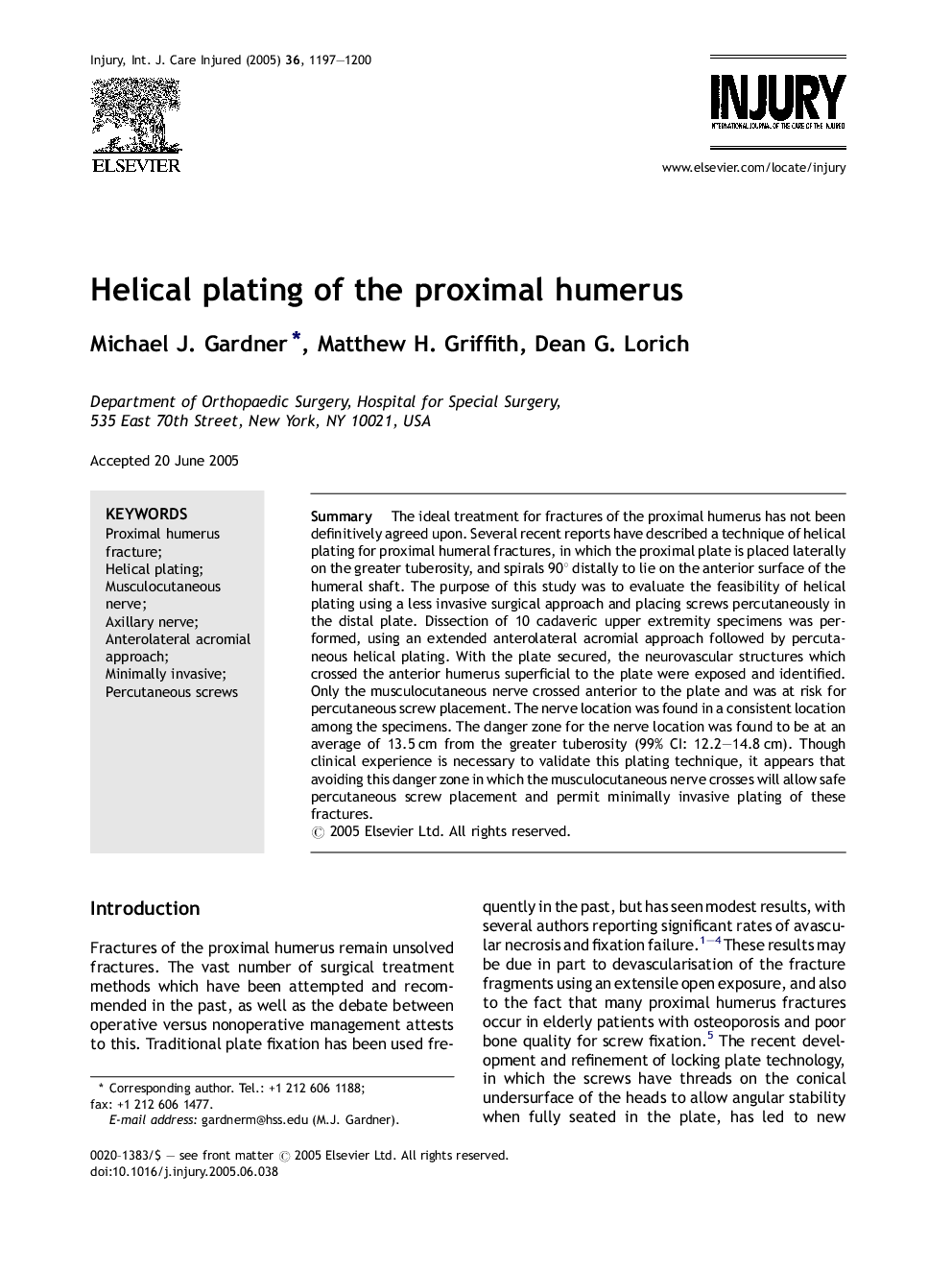| Article ID | Journal | Published Year | Pages | File Type |
|---|---|---|---|---|
| 9234066 | Injury | 2005 | 4 Pages |
Abstract
The ideal treatment for fractures of the proximal humerus has not been definitively agreed upon. Several recent reports have described a technique of helical plating for proximal humeral fractures, in which the proximal plate is placed laterally on the greater tuberosity, and spirals 90° distally to lie on the anterior surface of the humeral shaft. The purpose of this study was to evaluate the feasibility of helical plating using a less invasive surgical approach and placing screws percutaneously in the distal plate. Dissection of 10 cadaveric upper extremity specimens was performed, using an extended anterolateral acromial approach followed by percutaneous helical plating. With the plate secured, the neurovascular structures which crossed the anterior humerus superficial to the plate were exposed and identified. Only the musculocutaneous nerve crossed anterior to the plate and was at risk for percutaneous screw placement. The nerve location was found in a consistent location among the specimens. The danger zone for the nerve location was found to be at an average of 13.5 cm from the greater tuberosity (99% CI: 12.2-14.8 cm). Though clinical experience is necessary to validate this plating technique, it appears that avoiding this danger zone in which the musculocutaneous nerve crosses will allow safe percutaneous screw placement and permit minimally invasive plating of these fractures.
Related Topics
Health Sciences
Medicine and Dentistry
Emergency Medicine
Authors
Michael J. Gardner, Matthew H. Griffith, Dean G. Lorich,
